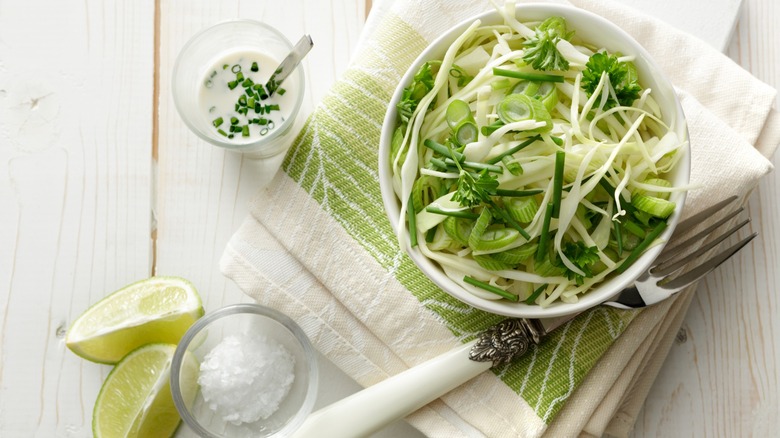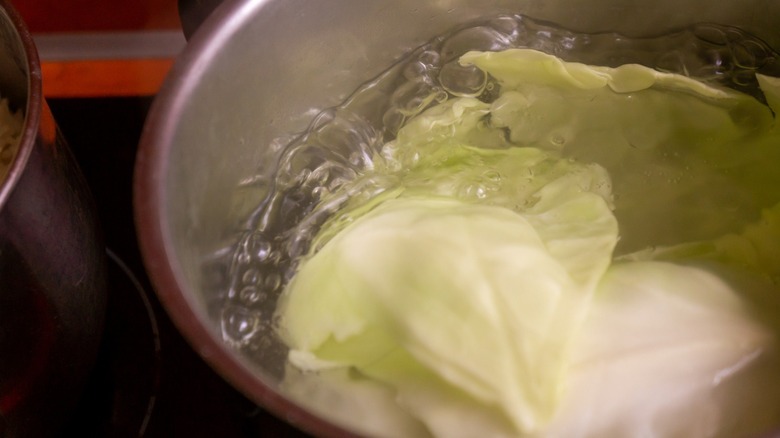The Crucial Reason You Need To Blanch Cabbage Before Freezing It
When it comes to preserving cabbage, one crucial step often overlooked is blanching before freezing. This process is not just a mere tradition, it's backed by science and practical benefits that ensure your cabbage retains its quality over time. Blanching involves briefly boiling vegetables and then plunging them into ice water which is vital for several reasons, including enzyme deactivation.
Cabbage contains natural enzymes that continue to age and break down the vegetable with time leading to loss of flavor and color. Blanching halts this, effectively pausing the aging process and ensuring it remains fresh-tasting for longer. Even though freezing inevitably affects the texture of cabbages, stopping the enzyme action through blanching helps retain some of that crunch.
Finally, blanching extends the shelf life it has in the freezer. While unblanched cabbage might suffer from quality degradation within a few months, a blanched version can be stored longer without significant quality loss.
How to blanch and freeze cabbage
Blanching and freezing cabbage is a straightforward process. To blanch, start by washing it thoroughly. Then, chop it into the desired size, whether shredded or cut into quarters. Next, bring a large pot of water to a rolling boil. You'll need enough water to cover the cabbage completely, approximately one gallon per pound.
Add the vegetable to the boiling water and blanch for one to one and a half minutes. The goal is to expose the cabbage to heat just long enough to deactivate the enzymes. Immediately after blanching, transfer it to a bowl of ice water. This stops the cooking process and helps preserve the texture and color.
Once cooled, drain the cabbage thoroughly and place it in freezer bags. Remove as much air as possible from the bags to prevent freezer burn. Label the bags with the date and freeze for up to nine months. When you're ready to use the frozen veggies, there's no need to thaw it first especially if shredded. You can add it directly to soups, stews, or any cooked dish and enjoy various cabbage recipes for months to come.

